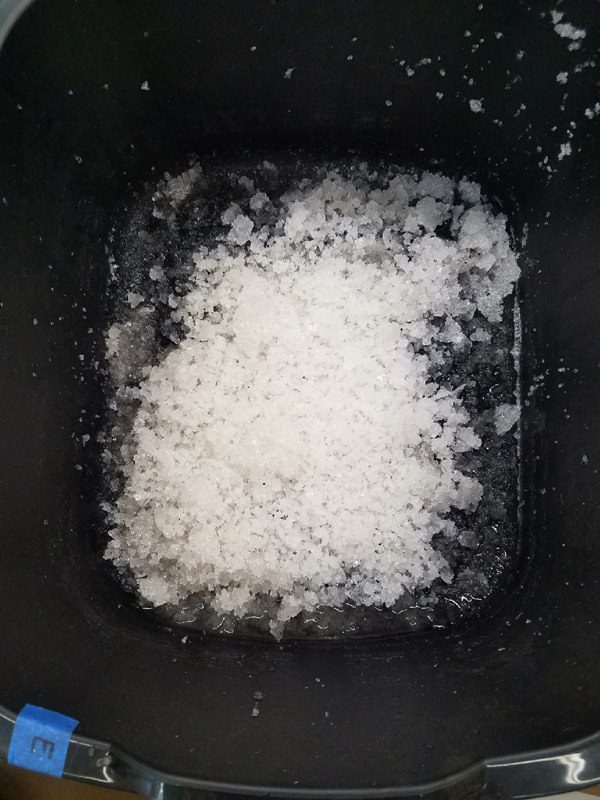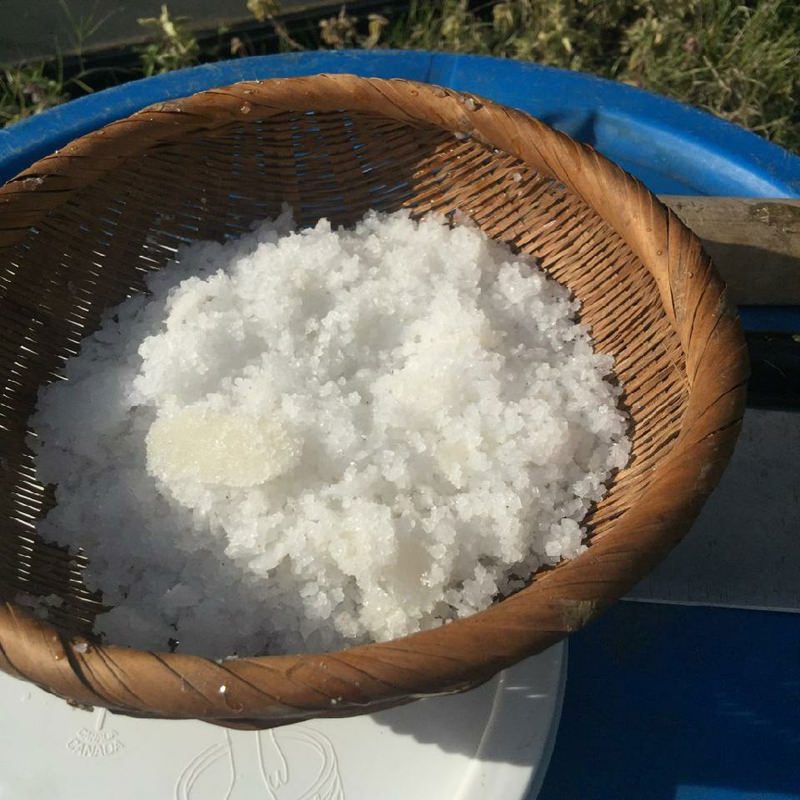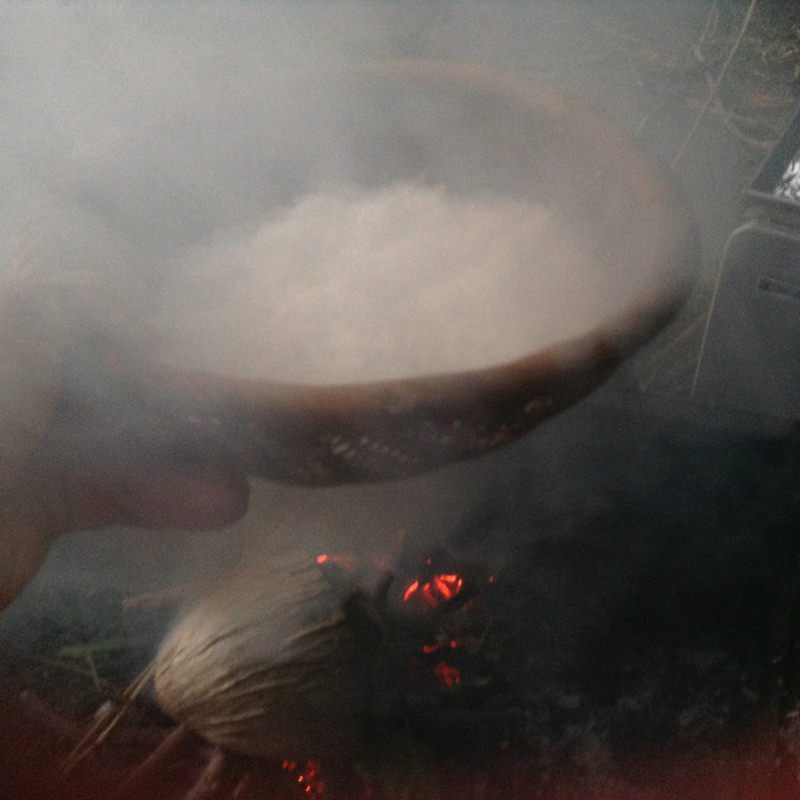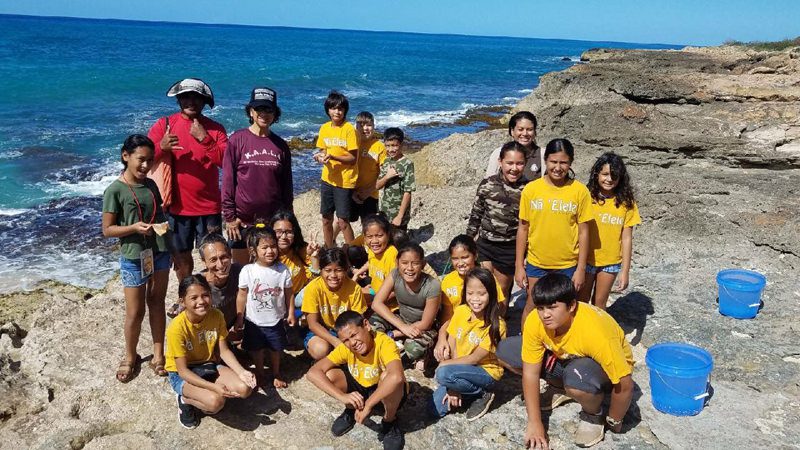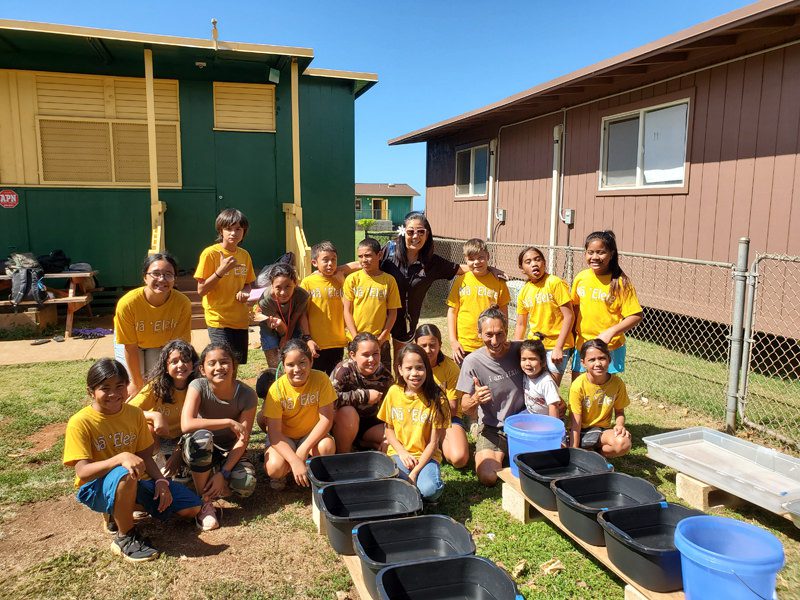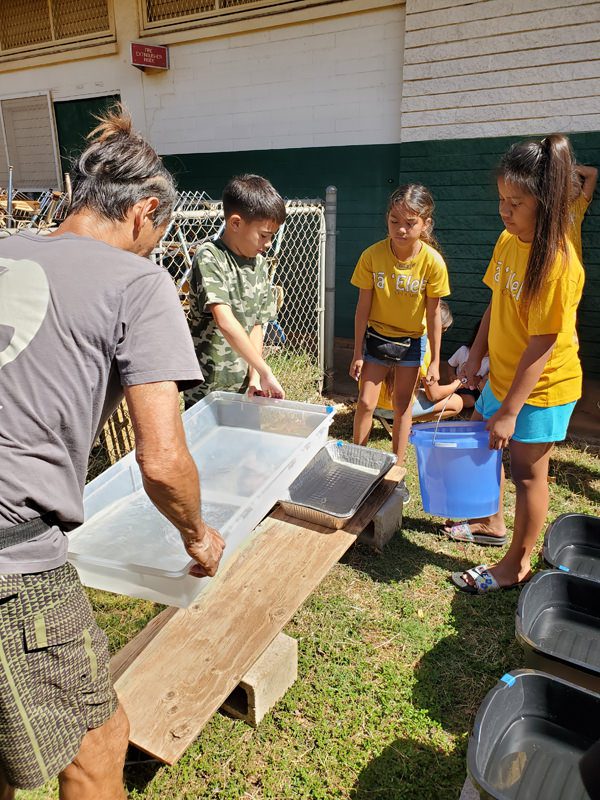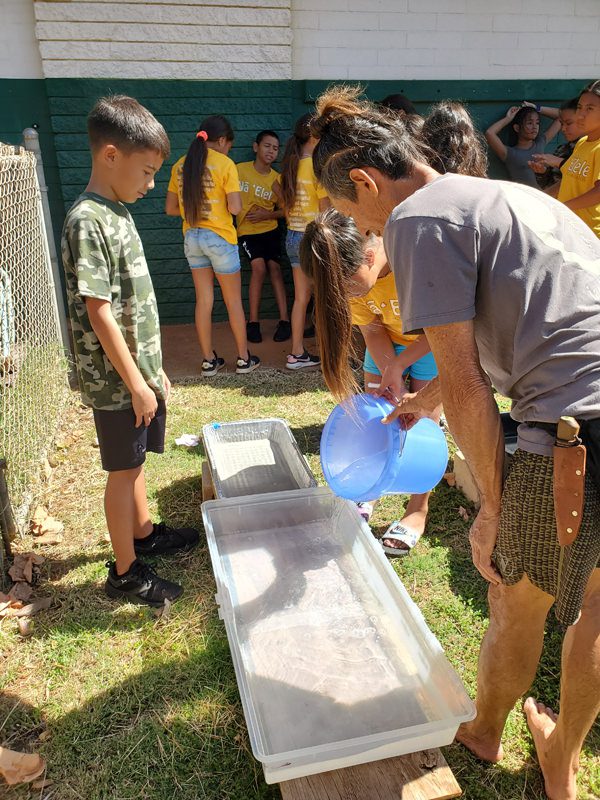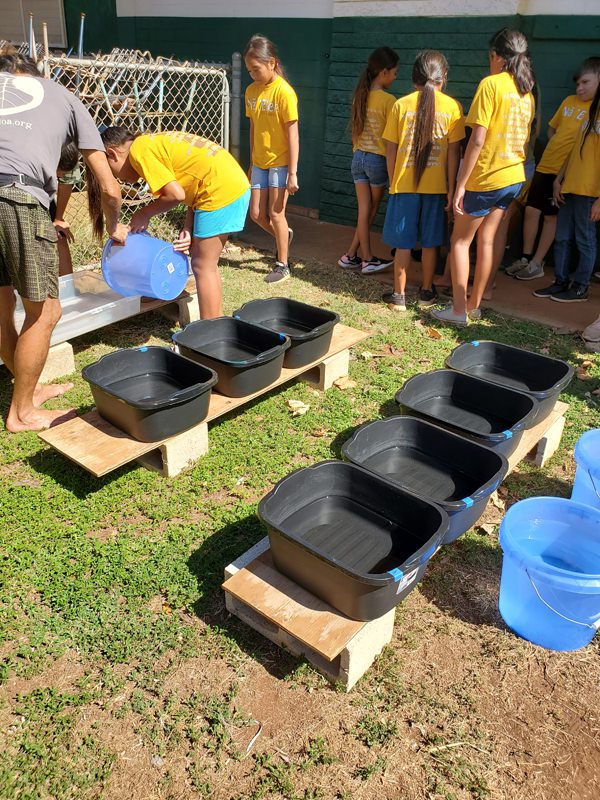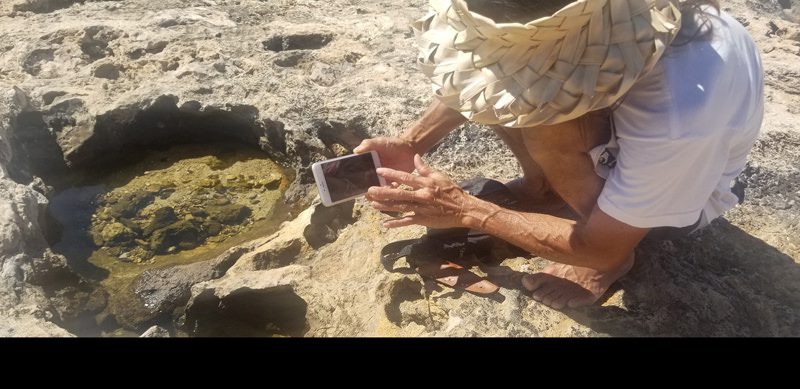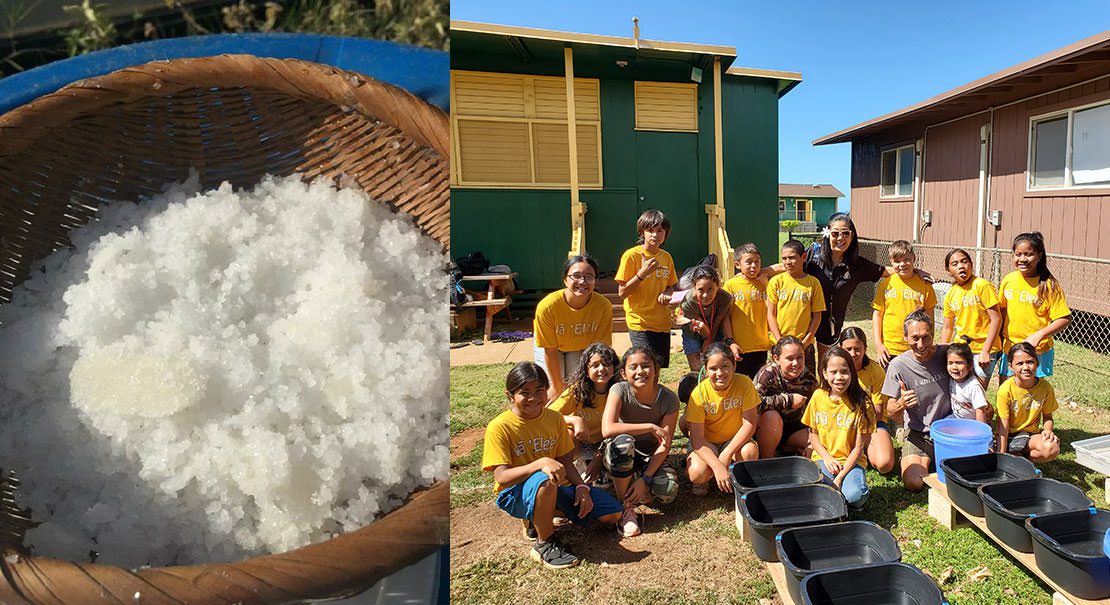
School: Ka Waihona o Ka Naʻauao, Public Charter School
Grade Level: Grade 4
Teacher: Carla Kahiapo
Driving Question: What was the significance of paʻakai to our kūpuna and how is it significant to us today?
What did the students do?
Students worked with community practitioner Vince Dodge to collect seawater (kai) to make paʻakai (salt) in their classroom. Students, accompanied by their teacher, lifeguard, and Uncle Vince, ventured out to the reef behind their school to collect seawater for their experiment. Once in class, the kai was poured into various containers (foil pans, plastic, and Rubbermaid wash bins) and placed in the field behind their classroom where it could stand in full sunlight. Students kept journals to record observations and collect data. This included, but was not limited to, the rate of evaporation, salinity, color, and coarseness of the salt. Both simple tools and sensory modes were applied to collect data.
Students tended their salt trays making daily observations and recording data. They had virtual meetings with Uncle Vince every other week to discuss their observations, ask questions, problem-solve, and get instructions for the next steps. They also had monthly face-to-face meetings with him to share findings, collect more kai, or make adjustments to their research as needed.
With the salt they made, students were to prepare salt rubs for cooking by adding herbs from their class māla (garden). These salt rubs would be gifts to their families.
Over the progression of the project, students experimented with recipes using paʻakai and produce from their class māla. Growing produce, harvesting, preparing, cooking, and eating together was an important part of building relationships in the classroom. Students had farm-to-table experiences on a weekly basis. This fostered connections with each other, the ʻāina (land), and their kūpuna (elders and ancestors).
Place-Based Field Experiences/Connections
As an entry event, students watched a video from the Hanapēpē Salt Ponds on the Island of Kauaʻi, a place that still makes paʻakai in the traditional way. The video showed the process of making paʻakai and talked about its significance in Hawaiian culture. Following the video, students were able to taste paʻakai with produce from their māla (tomatoes, sweet potato leaves, and eggplant). They discussed the driving question — breaking down the need-to-knows as a whole-class, and talking about how their ancestors used paʻakai for cooking, preserving ceremony, and healing.
Through this project, students connected (k)new (ancestral) knowledge with new (contemporary) knowledge. This project allowed for the ancient and contemporary to come together to assist learners in finding the interrelatedness between Hawaiʻi’s past and present.
The multiple walking field trips out to the reef allowed students to practice the art of kilo (keen observation) by observing ocean waves and currents, limu (seaweed), tide pool creatures, and weather elements as they collected kai to bring back to class. They took time to connect to their environment through multi-sensory means, appreciating, and making discoveries about their surroundings that are often overlooked in a busy school day.





